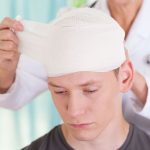
If you have had a sharp pain shooting down one leg, you may be experiencing a condition called sciatica. Here is what you need to know about sciatica, including what it is, its causes, symptoms and treatments. Plus, learn about medications, self-care and stretches that may provide relief. What is sciatica? Sciatica refers to pain that travels along the path of the sciatic nerve. The sciatic nerve travels from the lower back through the hips and buttocks and down each leg. The pain may be severe but usually clears up in a few weeks. Sciatica nerve pain causes and risk factors Causes of sciatic nerve pain include anything that affects the sciatic nerve, according to Penn Medicine: Slipped or herniated disk Spinal stenosis Piriformis syndrome Pelvic injury or fracture Tumors Spondylolisthesis The Cleveland Clinic notes that risk factors include: A current or previous injury Normal wear and tear Excess weight or obesity Insufficient core strength Your job Type 2 diabetes Physical inactivity Improper form when lifting Tobacco use Sciatica symptoms Penn Medicine further reports sciatica pain can vary from mild tingling to a dull ache or a burning sensation. Typically, the pain affects one side of the body. It may worsen: After standing or sitting At night When sneezing, coughing or laughing When bending backwards or walking a few yards When straining or holding your… read on > read on >



























-300x200.jpg)










